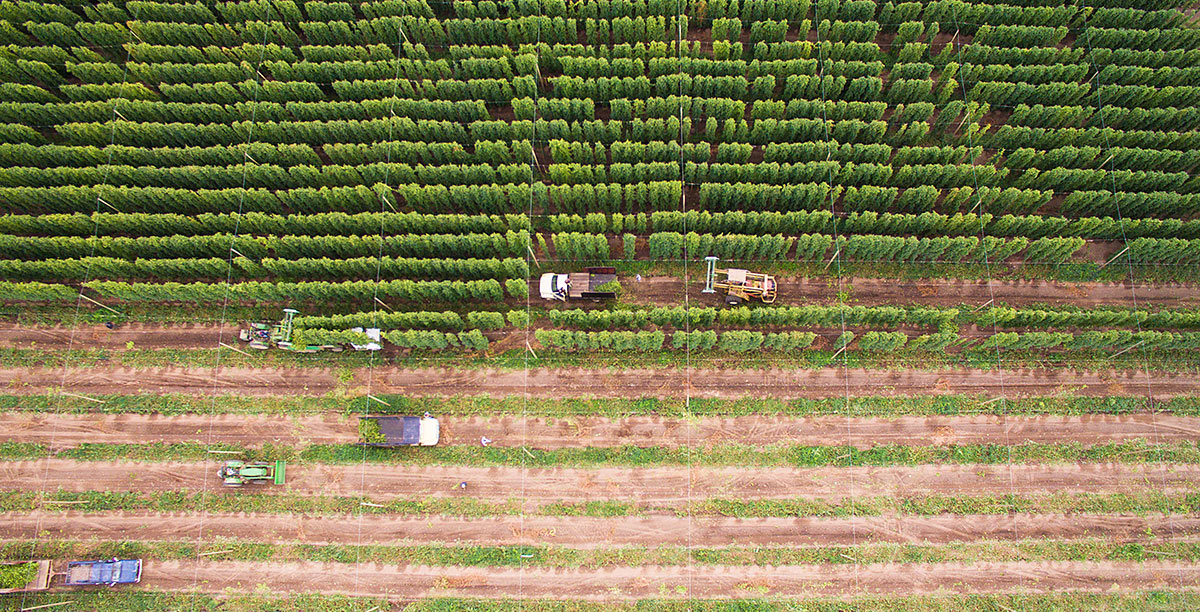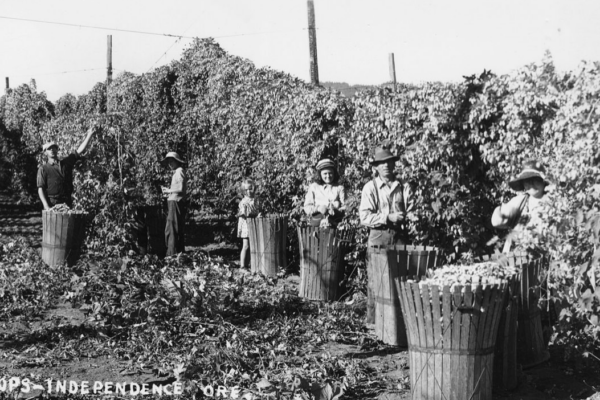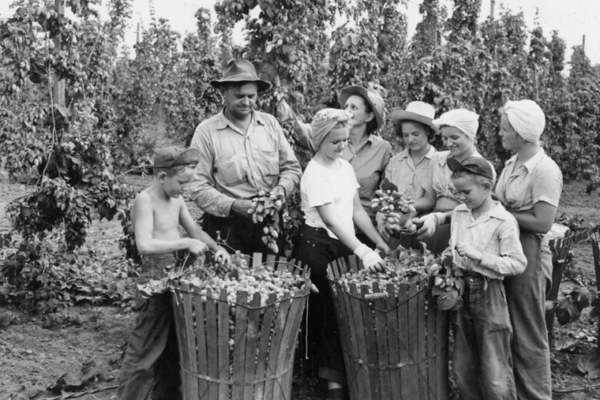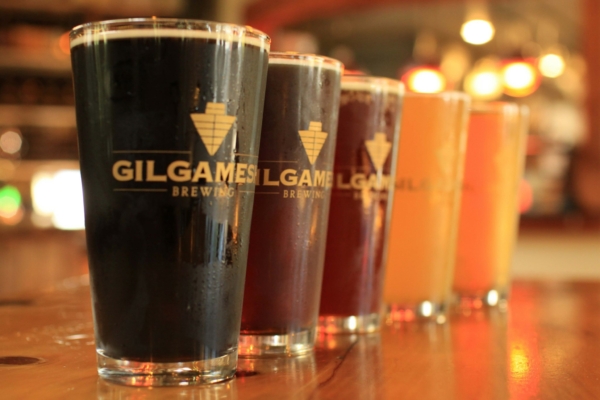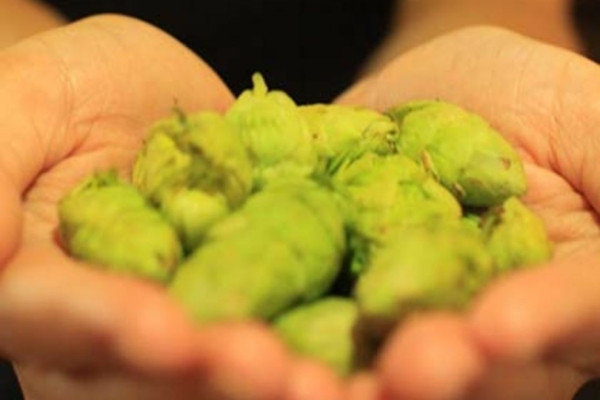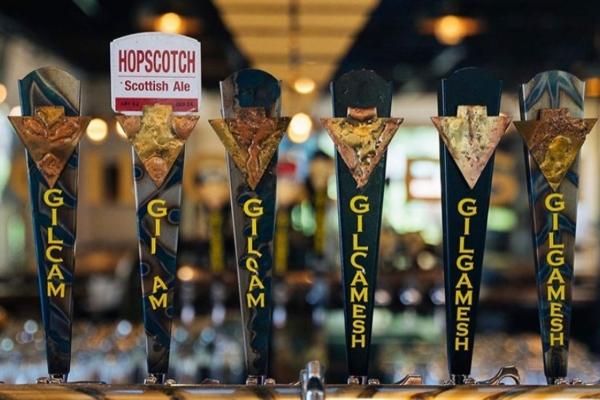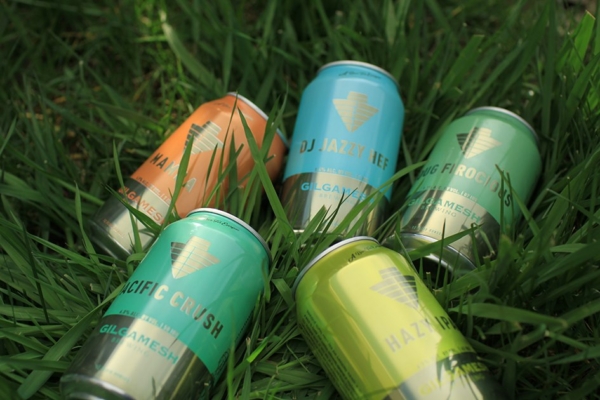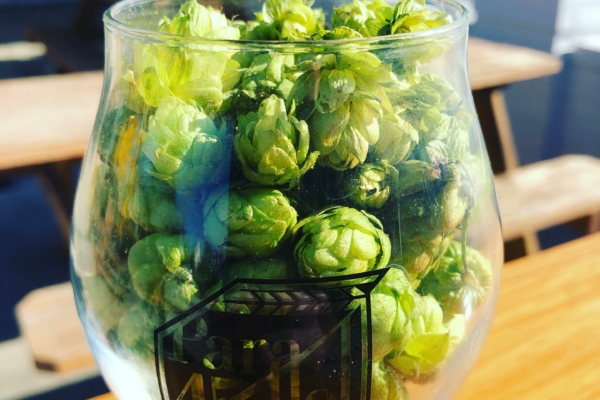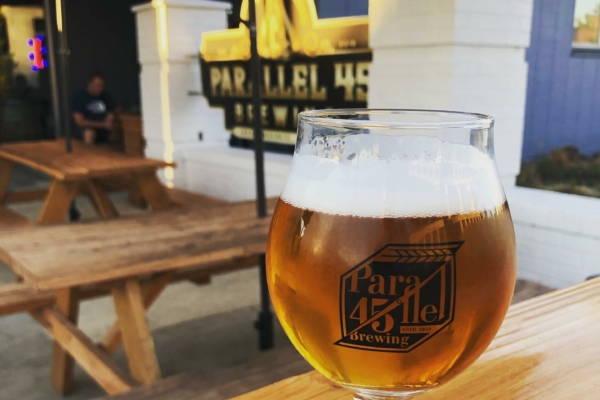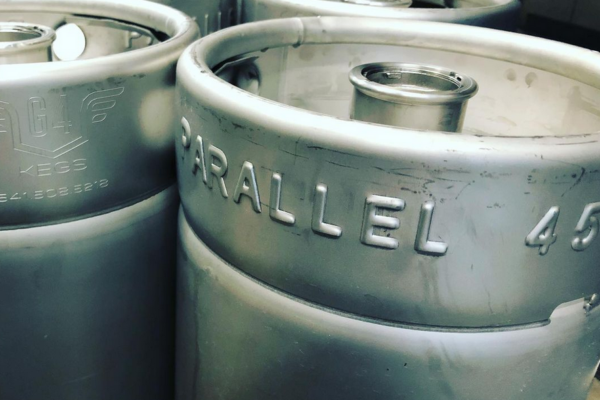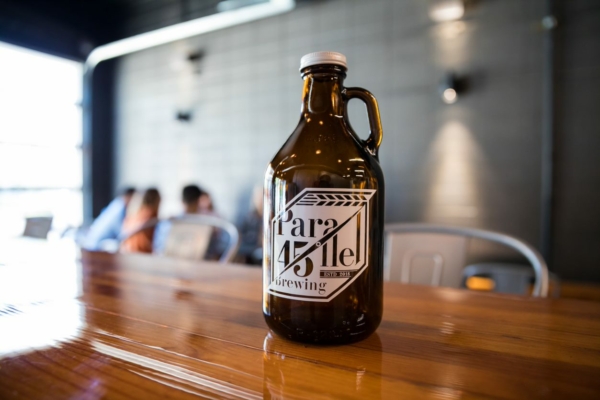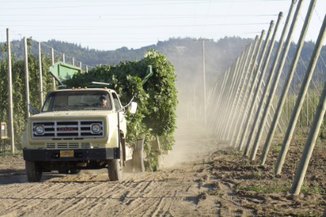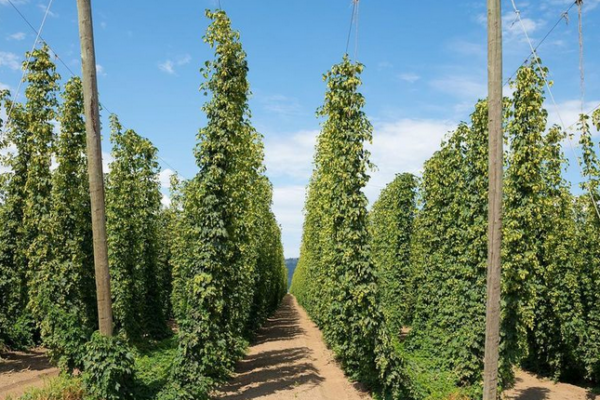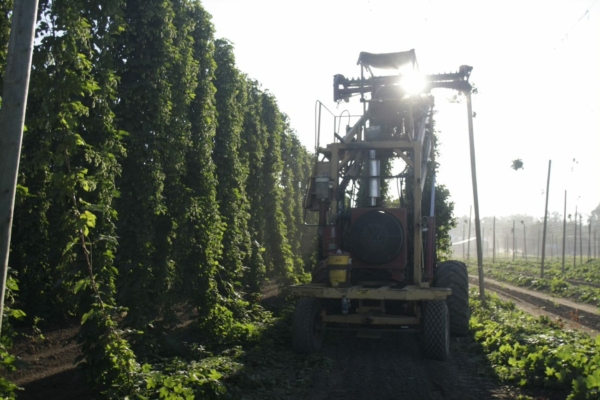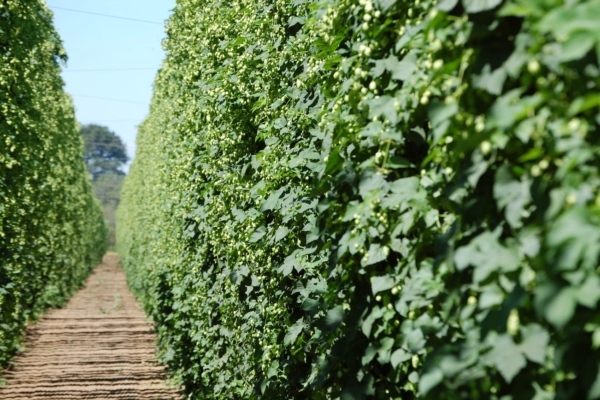A Look at the Thriving Craft Beer Scene Around Independence
For much of its early history, the community of Independence was synonymous with the hop plant. The versatile crop gives certain beers their aromas, keeps others fresher for longer, and imparts all manner of flavors on nearly every ale or lager you’ve ever enjoyed—from vanilla-tinged porters to IPAs that taste of citrus or stone fruit.
Independence was founded in the heart of one of the most productive hop-growing regions in the country and, through the early 20th century, drew laborers from as far away from China every summer to pick the freshest hops possible for inclusion in beers all over the world. And while Polk County is no longer the “Hop Center of the World”, the craft beer tradition around Independence lives on through a pair of recently-opened brewpubs in town.
Here’s more on Independence’s hop history, the community’s burgeoning breweries, and their close connection to the city’s agricultural past and present.
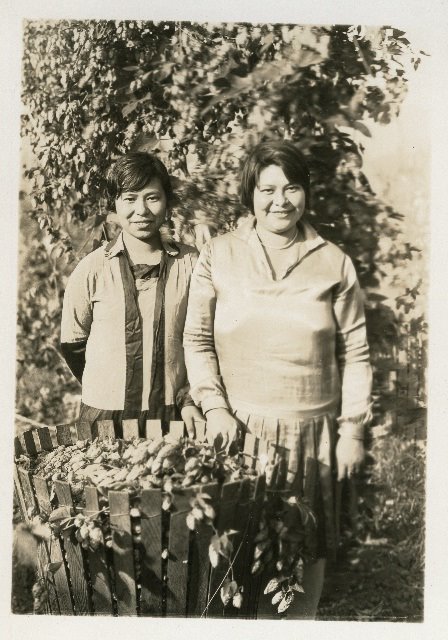
Independence Boasts Long History of Hop Growing
Hops have a long history in the Willamette Valley—one that predates the modern craft beer boom by 150 years.
European immigrants and settlers planted the Willamette Valley’s first hops in the 1860s, with the first successful harvest bearing fruit in 1869. With nutrient-rich soils, ample water supply along the Willamette River, and a climate similar to that of the Hallertau region in Germany—one of the best-known hop-producing districts in the world—farmers quickly realized the Willamette Valley’s potential and began growing hops en masse.
Between 1905 and 1915, Oregon was the most productive hop-growing state in the nation—and remained a force in the industry through World War I, the Great Depression, and Prohibition. Naturally, most of the state’s 20,000 acres of hop plants were planted in the Willamette Valley.
By the 1930s, Polk County became known as the “Hop Center of the World” and was the United States’ leading hop-producing county; the town of 1,000 would swell during harvest every August and September to a population of 10,000 or more—with pickers, processors, buyers, and other laborers from around the world clamoring for a role in the profitable industry.
Even today, Independence remains a busy hop-growing region. Several hop fields still surround the community—connecting the area to its thriving history, helping boost Oregon’s reputation as a craft beer destination, and supporting a pair of brewpubs around town.
Gilgamesh Brewing Open Third Pub in Independence
Mike Radtke, general manager at Salem-based Gilgamesh Brewing, knows all about that hop-growing history in the Willamette Valley: After all, his grandmother picked hops in the region—a feat immortalized on a photograph that he keeps to this day.
That affection for agriculture was passed down through generations—Radtke helped out on local farms as a child—and has informed Gilgamesh Brewing since its founding in 2009.
Ever since the Salem-based Gilgamesh brewed its first beer, Radtke has been passionate about showcasing the best of the Willamette Valley’s agricultural output; over the years, the brewery has incorporated all manner of local crops—including blueberries, hazelnuts, peaches, pumpkins, and mint—into its eclectic lineup of beers.
It’s an intentional decision, one that inextricably links Gilgamesh to the region that birthed it. “We always like to use our products to say, ‘Hey, remember that Marion and Polk counties are Oregon’s premier space for local goods,’” Radtke says. “It is important to remind people to look at what’s around us. We have a lot here to see and experience.”
Gilgamesh opened its first outpost in Independence (and third location overall) in early 2020, dubbing the pub “The River” (thanks, in part, to its close proximity to the Willamette River). Given the brewery’s close connection to the Willamette Valley—along with a growing downtown core in Independence—Radtke says a move into the city made sense. “It looked like there was a need for a location like ours—a fun craft beer, craft food kind of experience—that they didn’t have there yet,” he says.
Today, visitors can sample Gilgamesh’s locally brewed beers, along with a food menu that leans heavily on Oregon-grown and Oregon-produced fare, in the heart of downtown. A spacious back patio and stage for live music helps the pub feel like a backyard party on sunny days.
Parallel 45 Brewing Learns to Adapt in Earliest Days
Greg Laird, co-founder and co-owner of Parallel 45 Brewing in Independence, is no stranger to the city’s close connection with farming and agriculture. Laird, after all, grew up on a farm in the rural Willamette Valley—and was the sixth generation in his family to do so.
So when Laird, along with co-founder and head brewer Ryan Booth, wanted to open a new brewery, they knew where to look. “I definitely wanted to find somewhere that matched that small-town vibe,” Laird says. The duo looked at the Salem area but quickly fell in love with what Independence offered. “It’s a really cool community,” Laird says. “Everybody who’s new gets welcomed with open arms.”
That said, the community could only welcome Parallel 45 from a distance of six feet or more in the brewery’s earliest days, since the brewery wrapped up construction on its downtown location in October 2020. Parallel 45 opened just three weeks before indoor dining restrictions were implemented that fall, forcing the brewery to adapt on the fly; Laird acquired a mobile canning line to facilitate to-go orders and managed to provide covered, heated outdoor seating while indoor dining was forbidden. “It was a lot of trips to the local hardware store,” Laird says of that hectic time.
Today, with restrictions eased and mandates lifted, Laird and Booth are working hard to establish themselves—and grow their audience around Independence. For Laird, that means listening to what their fans want, keeping an eye on trends, and remaining creative about whatever comes next. “We want to bring a little innovation and pay attention to what our customers want; what do they want, and can we execute on that in a way that maybe they’re not expecting?” Laird says. “We just want to constantly be pushing the boundaries, doing something new, and executing to the highest possible quality that we can.”
Willamette Valley an Active Ingredients in Breweries’ Success
Even though his brewery only opened its doors in October 2020, Laird has already taken advantage of its unique location within the Willamette Valley.
Wildfires all over the West Coast decimated crops in September and October 2020—including hops grown in the Willamette Valley. But where other brewers might have passed on smoke-tainted hops, Laird and Booth saw an opportunity: The duo sourced local hops—even ones discarded by growers and processors—for an imperial stout they poured in mid-2021. “It gave a little smoky flavor,” Laird says. “More than anything, this was an opportunity to experiment.”
Fortunately, most beers brewed by Parallel 45 and Gilgamesh have a far less perilous path to your pint glass. Whenever possible, the breweries source their hops from growers and brokers throughout the Willamette Valley—and that invariably includes hops grown just outside Independence.
Visitors wanting a taste of those nearby hop fields should keep an eye out for fresh-hop season, which generally occurs between early September and early October. The season is named for when hops are picked fresh from the bines—usually between mid-August and mid-September—and tossed (within 24 hours) into beers-in-progress. The resulting ales and lagers generally boast juicy notes that bring the hop’s unique characteristics to the forefront, leading to beers with intense flavor profiles.
Part of what makes fresh-hop season so fun is that hops start to lose those characteristics as soon as they’re picked, giving brewers a limited window to craft memorable beers with the crops. Naturally, breweries that boast a close proximity to those hop fields—such as those in Independence—are well-positioned to take advantage of the opportunity each summer and fall. Radtke, for his part, says Gilgamesh has worked with Independence-area hop growers on fresh-hop beers in the past; similarly, Booth sources hops from nearby farms each summer.
Even if it’s not fresh-hop season, imbibers at Independence-area breweries are usually enjoying a taste of the Willamette Valley all year long—an experience they can’t enjoy anywhere else in Oregon. “It’s important to remind people to look at what’s around us,” Radtke says. “We have a lot here to see and experience.”

